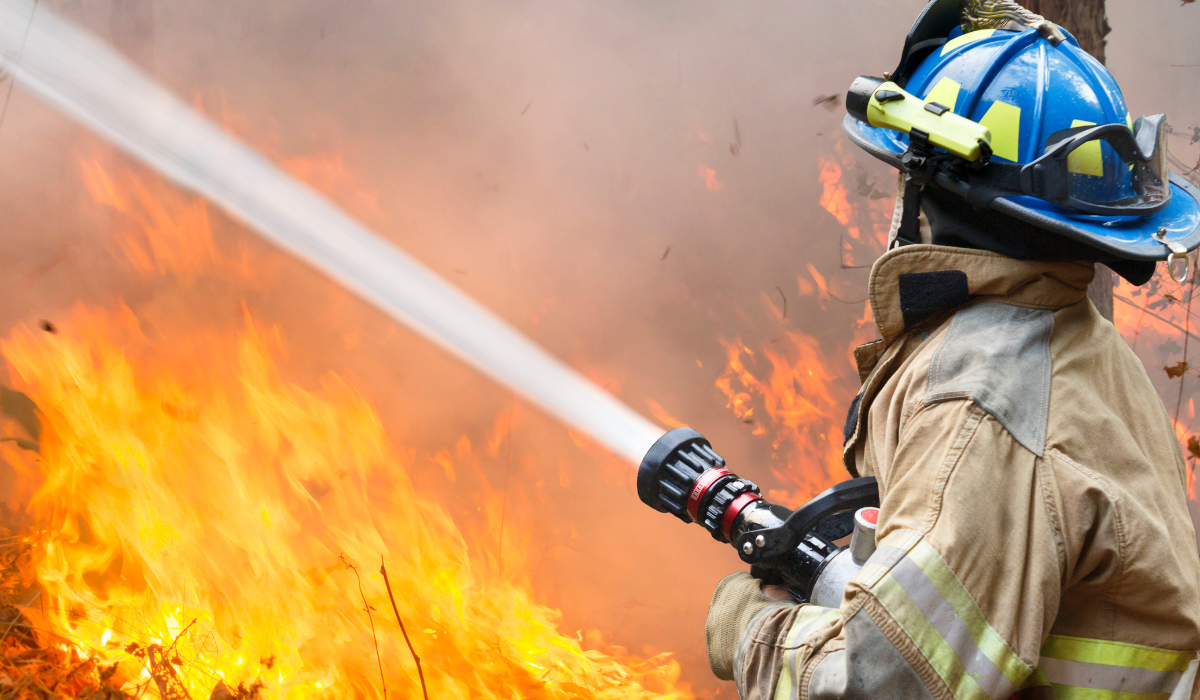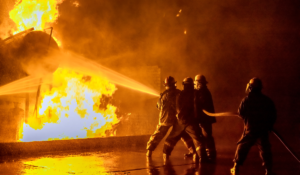It’s no secret that the dangers of firefighting are incredibly real, and deadly serious. By its very nature, fighting fire involves higher levels of risks and greater variety of hazards than most occupations today. Firefighters are unsung heroes who bravely face various physical and chemical hazards in the line of duty.
From intense heat and flames to exposure to hazardous substances, fire fighters encounter a range of dangers that require serious protection, training, and safety precautions.
Even a quick look at the numbers point to the dangers involved.
Firefighting Dangers and Fatalities Statistics:
- In 2023, 30 deaths have been recorded (as of time of publishing)
- In 2021, there were 70 non-COVID-19 on-duty firefighter deaths.
- In 2018, 82 firefighters died while on duty.
- In 2018, public fire departments responded to an estimated 1,318,500 fires in the United States, of which 499,000 occurred in structures, 181,500 occurred in vehicles, and 607,000 occurred in outside properties. And, a fire department responds to a fire somewhere in the United States every 24 seconds.
In this article, we will explore seven common physical and chemical hazards faced by firefighters and discuss effective strategies for managing them. By understanding and addressing these risks, you can better protect the safety and well-being of firefighting heroes everywhere.
Let’s break it down…
Related Article; Breaking Down Requirements for NFPA 1582

Dangers of Firefighting and Effective Ways of Managing Them
There are numerous physical and chemical hazards encountered by fire fighters in the line of duty. Let’s take a look at some common ones and how they can be managed.
Extreme Heat and Flames
Firefighters confront extreme heat and flames, which pose immediate dangers such as thermal burns and heat-related illnesses.
To manage this hazard, firefighters are equipped with fire-resistant suits, gloves, and helmets. Specialized training in fire behavior and firefighting techniques enables them to navigate hazardous environments effectively and extinguish fires safely.
- See OSHA Fire – Resistive Coat Requirements for Fire Brigades.
- See OSHA Guidelines for Fire Protection and Prevention.
- See OSHA Fire Safety Standards.
- See NFPA codes & standards.
Smoke and Toxic Gases
Inhaling smoke and toxic gases during firefighting operations can have severe health consequences for firefighters. Continuous exposure can lead to respiratory issues and long-term lung damage.
To mitigate this hazard, firefighters rely on self-contained breathing apparatus (SCBA) to ensure a constant supply of clean air. Keep in mind that regular maintenance and monitoring of SCBAs remain essential to maintain their effectiveness.
Related Article: Cancer Leading Cause of Death in Firefighters
Structural Collapse
The structural integrity of buildings can be compromised during fires, increasing the risk of collapse. Firefighters must be vigilant and cautious of potential structural instability while inside burning structures.
Comprehensive training and adherence to established protocols for safe operations minimize the risks associated with structural collapse.
- NIOSH Recommends Measures to Protect Firefighters from Death, Injury in Structural Collapses.
- See OSHA Structural Collapse Guide.
Hazardous Materials
Modern structures often contain hazardous materials, such as asbestos, lead, or chemicals, which can pose significant risks during fires. Exposure to these substances can result in acute and long-term health issues.
Firefighters should receive specialized training in identifying and managing hazardous materials, including the use of personal protective equipment (PPE) and decontamination procedures.
Explosions
Fires involving flammable substances or gas leaks can lead to explosions, endangering the lives of firefighters.
To manage this hazard, firefighters undergo rigorous training in recognizing and responding to explosive situations. They follow established protocols for safe evacuation and maintain a safe distance from potentially explosive areas.
Electrical Hazards
The dangers of firefighting go far beyond that of heat and smoke.
You see, fires often involve electrical systems and equipment, presenting significant electrical hazards to firefighters. Accidental contact with live wires can result in electric shock or electrocution.
Firefighters are trained to identify electrical hazards and follow proper procedures, such as shutting off power sources before extinguishing fires. Additionally, the use of insulated tools and personal protective equipment minimizes the risk of electrical injuries.
Physical Injuries and Trauma
Firefighters are susceptible to physical injuries and trauma due to falls, debris, and equipment failure during firefighting operations.
Comprehensive training programs emphasize proper techniques for safe movement and the use of personal protective gear, such as helmets and safety boots. Regular equipment maintenance and inspections are crucial for preventing accidents and reducing the risk of physical injuries.
Bringing It Together
Even with the right equipment, procedures, and training, the dangers of firefighting can result in serious consequences. However, with the right mitigation factors in place, you and your team can minimize the risks.
By acknowledging and effectively managing these risks, fire departments can prioritize the safety and well-being of personnel. Adequate training, utilization of protective gear, regular equipment maintenance, and adherence to established protocols are vital in ensuring that firefighters can mitigate these hazards and continue their invaluable service to the community.
Remember, protecting the safety of firefighters is crucial in safeguarding lives and property. Let’s all recognize their dedication and commitment by implementing effective strategies to manage the physical and chemical hazards they face.
***
About Worksite Medical
In most cases, OSHA requires medical surveillance testing, and at no cost to employees.
Worksite Medical makes that program easier with mobile medical testing.
We conduct on-site respirator fit tests, as well as audiometric exams, pulmonary function tests and heavy metal lab work, right on your job site. We also keep accurate, easy-to-access medical records for your convenience. You’ll keep your employees at work, and stay ahead of OSHA inspections.




